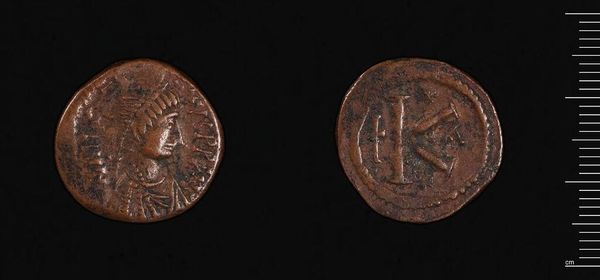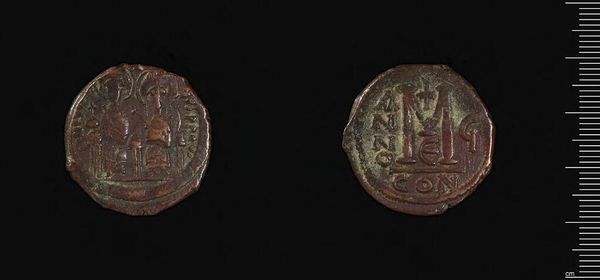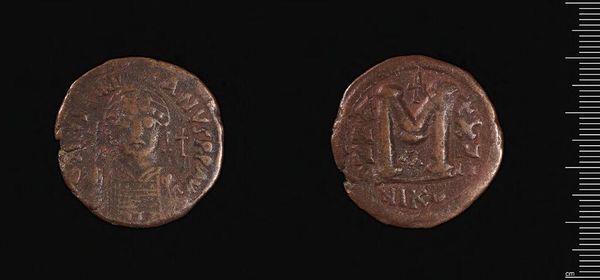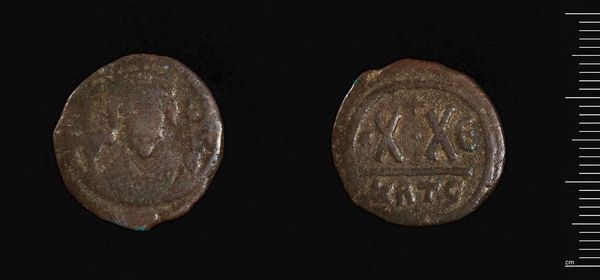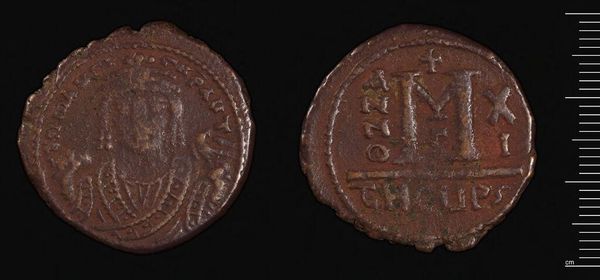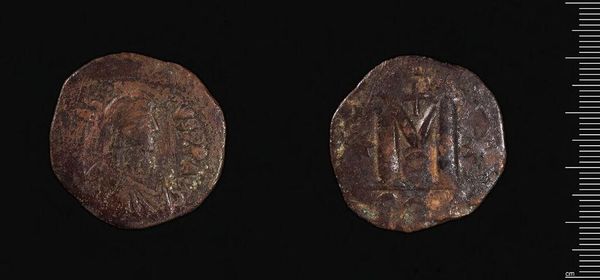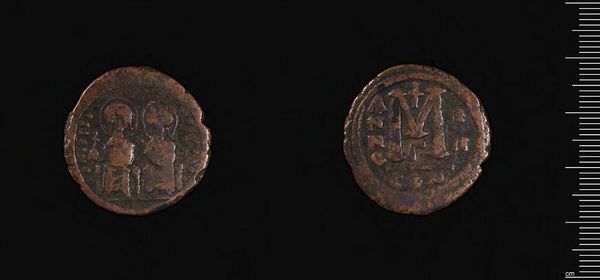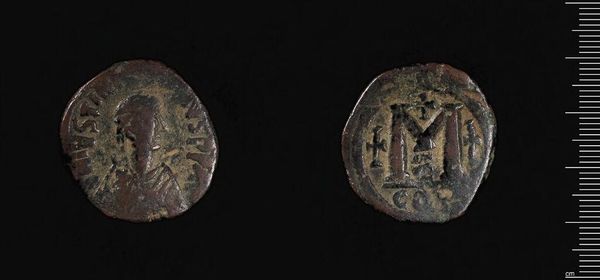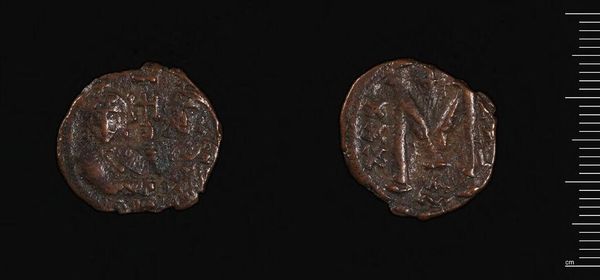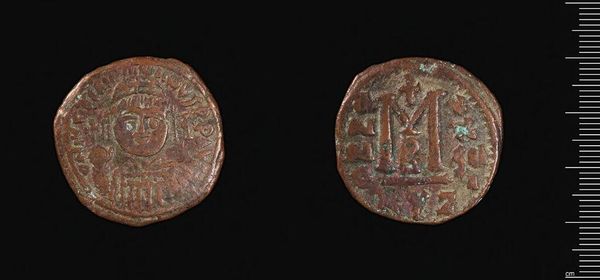
Dimensions: 16.09 g
Copyright: CC0 1.0
Curator: Here we have a follis coin of Anastasios I, originating from Constantinople. It’s a bronze piece, a tangible link to the Byzantine Empire. Editor: It looks incredibly worn, yet the remaining details tell a story of power etched into humble metal. I can almost feel the weight of history pressing down. Curator: Exactly. The portrait on one side represents Anastasios himself, while the other displays a large "M," indicating its value as 40 nummi. This object speaks volumes about economic and imperial power structures. How did material culture shape social stratification? Editor: The coin's degradation is fascinating. It shows the transformation of a meticulously made object into something shaped by daily usage, eroded by countless hands. It makes me consider the labor of those who mined, smelted, and struck these coins. Curator: Absolutely, and its purpose! Not just currency, but a propaganda tool, disseminating the emperor's image and authority throughout the empire. Consider the implications of its circulation within marginalized communities. Editor: The wear and tear add so much depth. It becomes a beautiful record of interactions, transactions, and the slow grind of time. I find that far more compelling than pristine perfection. Curator: It's a potent reminder that the smallest objects can hold the most complex narratives. Editor: Indeed, and that even in fragments, the material world can speak profoundly of our human existence.
Comments
No comments
Be the first to comment and join the conversation on the ultimate creative platform.
